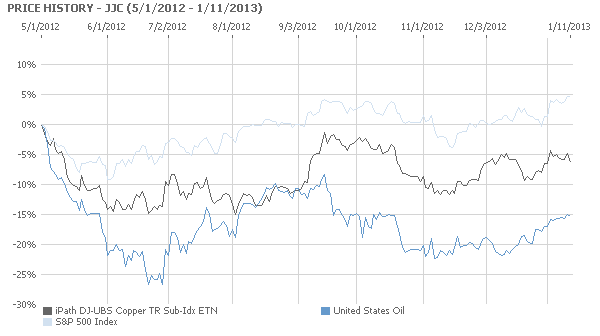Editor’s note: Following is a guest blog post from the folks at FinancialTrading.com. Even though our blog focuses on swing trading, rather than intraday trading, we know that many of our readers engage in both trading intervals. Further, we also thought it would be a nice change of pace to post some content that relates to how fundamentals can sometimes be used in unison with technical trading. Enjoy…
 Day trading any security is a risky venture, but any related to the global oil market are particularly volatile due to the myriad of factors at play. At any time, an announcement by a central banker, terrorist action, or weather event can affect the price. What does provide comfort to day traders of oil exchange traded funds (ETFs) such as United States Oil ($USO), is the floor of pricing provided by The Arab Spring.
Day trading any security is a risky venture, but any related to the global oil market are particularly volatile due to the myriad of factors at play. At any time, an announcement by a central banker, terrorist action, or weather event can affect the price. What does provide comfort to day traders of oil exchange traded funds (ETFs) such as United States Oil ($USO), is the floor of pricing provided by The Arab Spring.
The Arab Spring is the name given to a series of uprisings that began in The Middle East in December 2010. Of varying degrees of intensity, governments in Egypt, Tunisia, Yemen, and Libya have been toppled by domestic political opposition. However, The Arab Spring is far from over. Rioting has started again in Egypt. There is a vicious civil war that rages in Syria. Iran could also see similar actions by its domestic populace.
Determined to prevent any uprisings of this nature in their domains, oil-exporting nations have reacted to The Arab Spring by ramping up spending on social programs. These countries have a high percentage of young people, a demographic much more likely to challenge authority. As a result, domestic spending is set to increase by 19% this year for Saudia Arabia. To maintain that level of outlays, Ali Niami, the Oil Minister of Saudi Arabia, stated in an interview with The Financial Times that oil at $100 a barrel was the needed price
Despite declining global economic growth and increased natural gas production, Saudi Arabia and other oil-producing nations have managed to maintain the price of crude in the $90-$100 range. While other commodity prices sensitive to global economic demand such as copper and iron ore have fallen, oil has remained robust as a revenue source. According to a recent article in The Financial Times, OPEC nations booked $1 trillion in oil income for 2012, a record year. But, as the chart below shows, copper and oil do move in a co-relation:

Further, as the table below reveals, the performance of the exchange traded fund for oil , United States Oil (NYSE: $USO), has been much better than the exchange traded note for copper, iPath DBJ-UBS Copper (NYSE: $JJC).
| JJC | USO | |
| Share Price Week | (1.29%) | 0.53% |
| Share Price Month | (.088%) | 8.23% |
| Share Price Quarter | (2.19%) | (0.35%) |
Source: Finviz.com
For day trading, the data above provides vital information, particularly for paired transactions. Knowing that Saudi Arabia and others are committed to oil in the $100 range, in order to suppress any events related to an Arab Spring, intervention can be expected. Day traders should buy the $USO when the floor price is approached, but sell or maintain short positions on commodity ETFs such as $JJC, despite traditional trading patterns.
The impact of oil is not limited to just copper or iron ore ($MXI) and steel ETFs ($SLX). As fuel is the greatest cost for each industry, the ETFs for shippers ($SEA) and airliners ($FAA) will also move based on the direction of oil prices. Due to the demands of ethanol production, the corn ETF ($KORN) is also influenced by what crude costs. As an example, if oil is high, $KORN will rise as ethanol becomes more desired as an alternative source of fuel.
In the novel, Wildfire, by Richard Ford, Warren Miller, the richest man in Great Falls, Montana, notes that, “You get rich by other people’s mistakes.” That is particularly true in day trading, especially if buying and selling on margin. But the commitment by Saudi Arabia and other oil-exporters to keep crude in the $100 range can help prevent USO day traders from making mistakes by setting their positions to allow for profits from the direction taken by the price of a barrel of oil.
